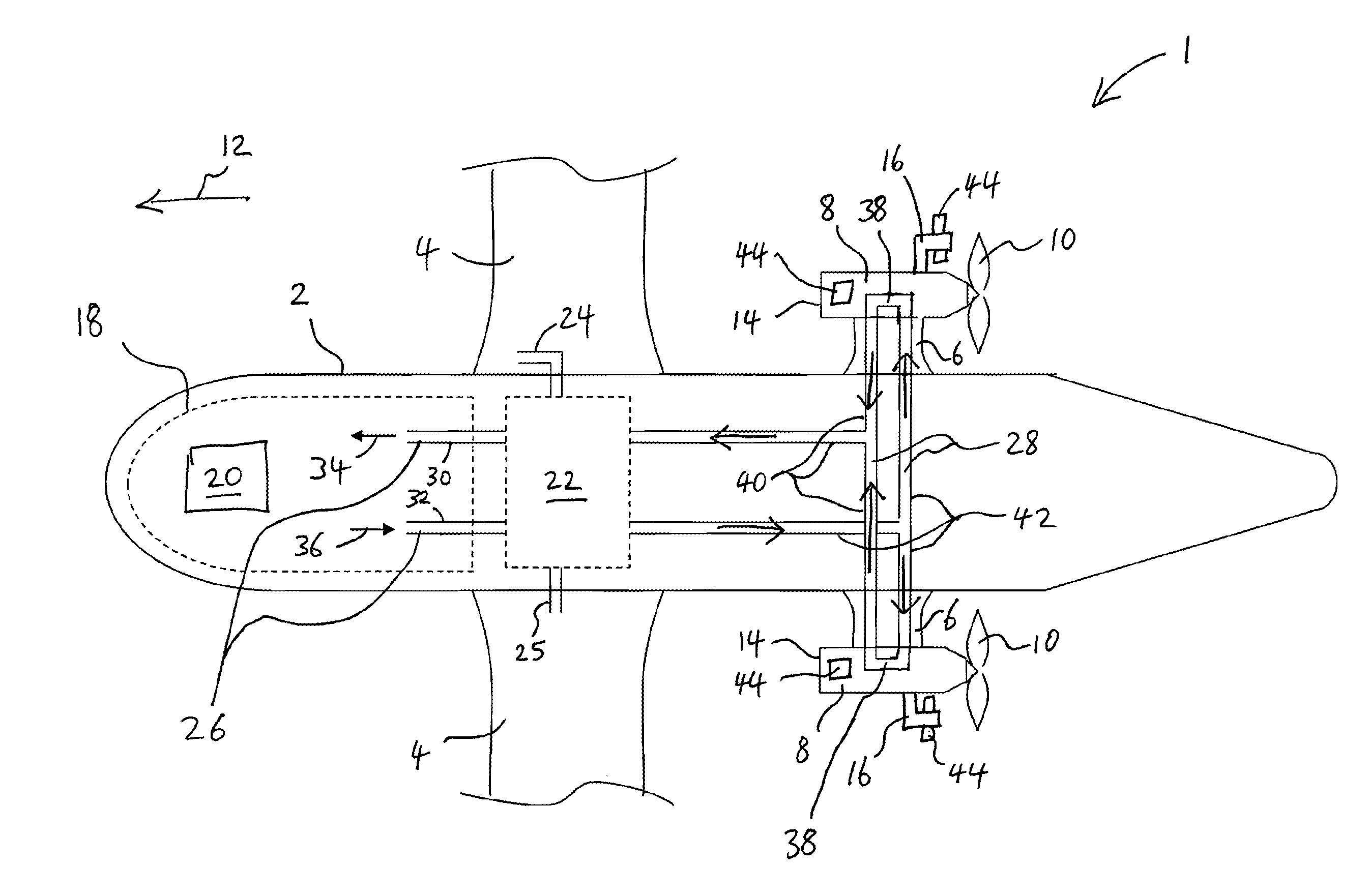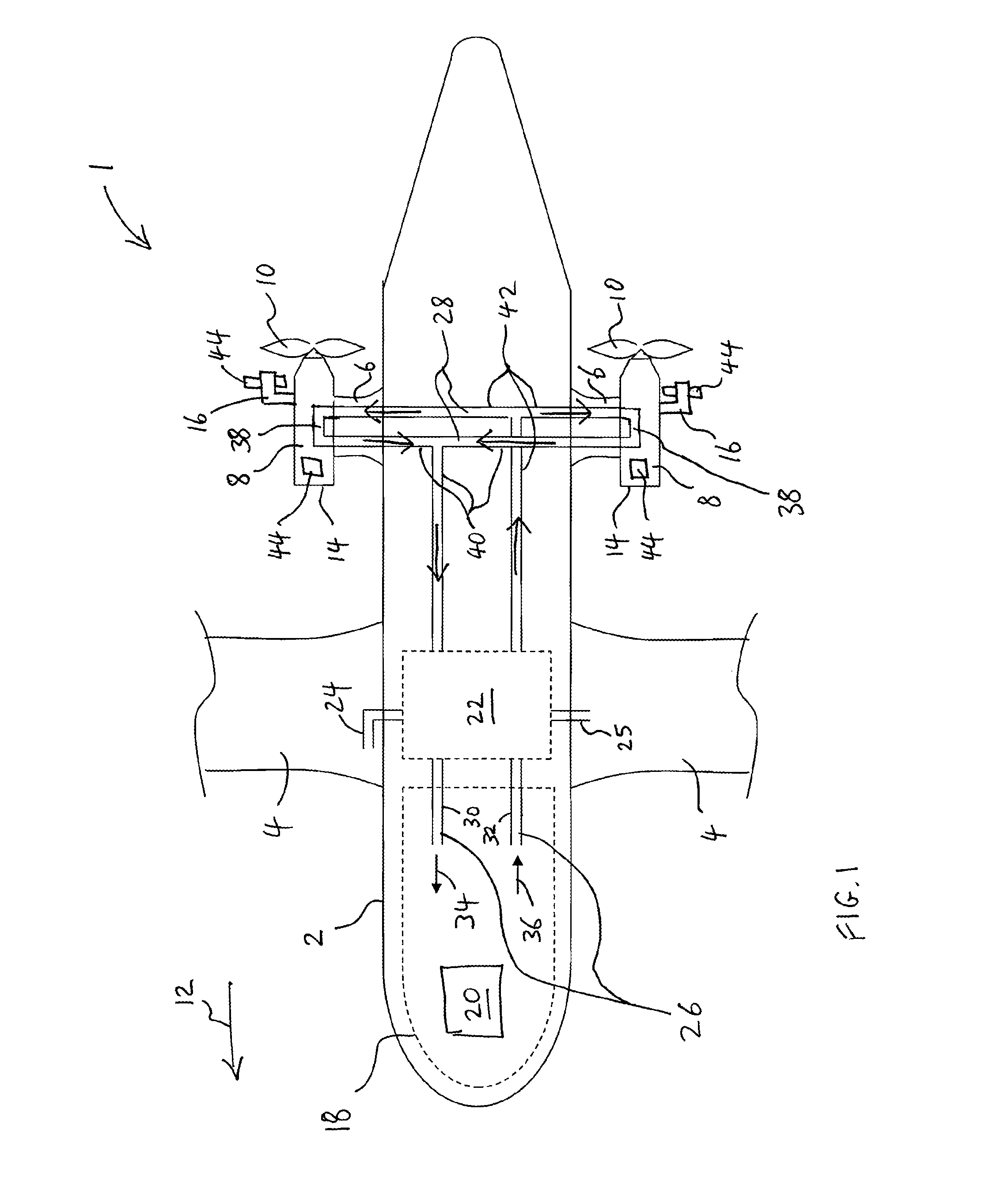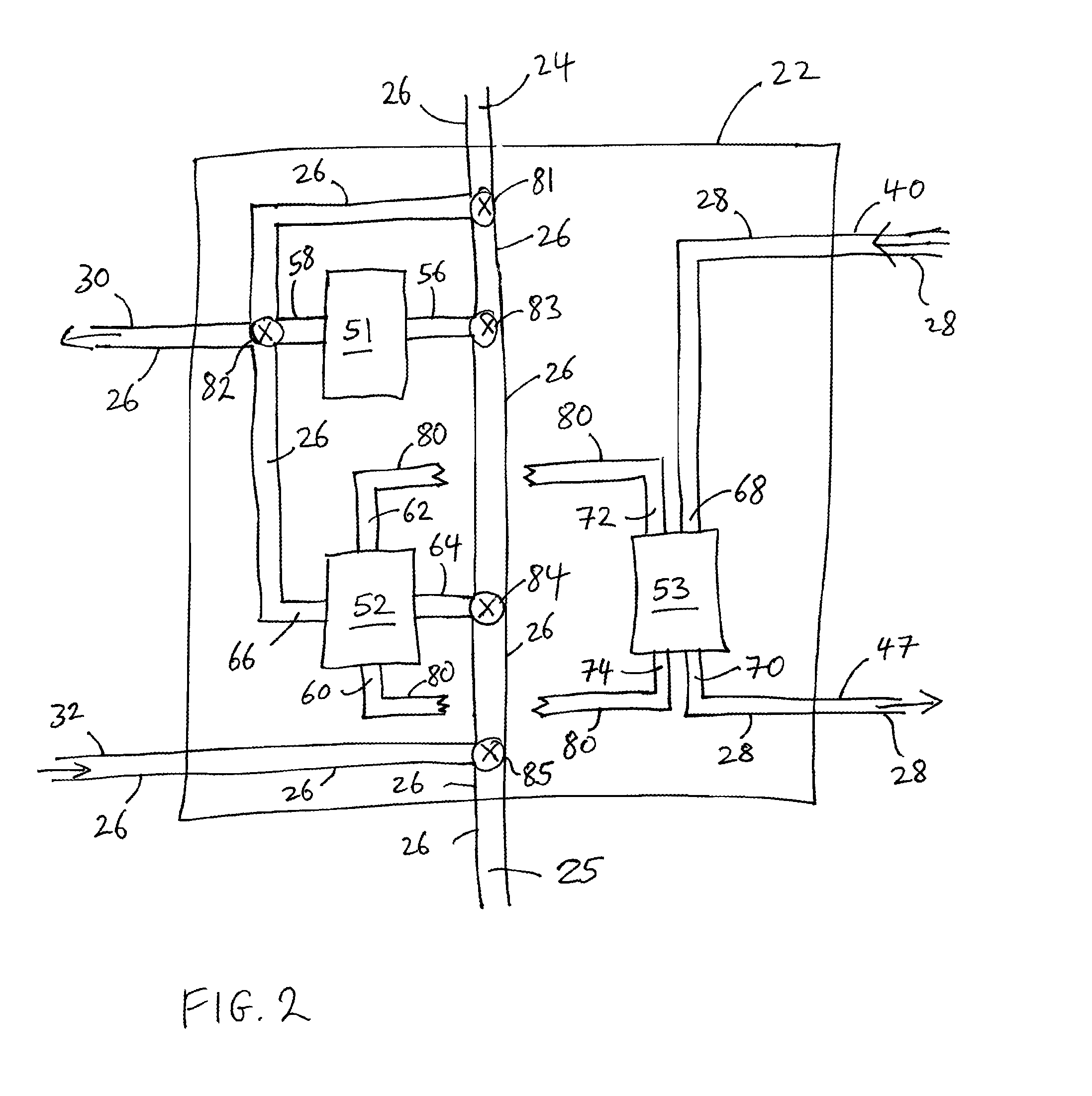Turboprop-powered aircraft
a turboprop aircraft and thermal management technology, applied in the direction of machines/engines, energy-saving board measures, lighting and heating apparatus, etc., can solve the problems of correspondingly complex and expensive (in terms of money or power consumption) thermal management arrangements practicable, and achieve simple system solutions, optimise/maximimise fuel economy and hence the duration of each mission. , the effect of improving the efficiency of surveillance functions
- Summary
- Abstract
- Description
- Claims
- Application Information
AI Technical Summary
Benefits of technology
Problems solved by technology
Method used
Image
Examples
Embodiment Construction
[0044]FIG. 1 is a schematic illustration (not to scale) of a turboprop-powered MALE aircraft 1 comprising a first embodiment of a thermal management system.
[0045]The turboprop-powered MALE aircraft 1 comprises a fuselage 2, wings 4 and engine support pylons 6.
[0046]Gas turbine engines 8, coupled to propellers 10, are attached to the engine support pylons 6. The gas turbine engines 8 drive the propellers 10 to provide propulsion to make the turboprop-powered MALE aircraft 1 travel in a flight direction 12. Each gas turbine engine 8 is encased in an engine casing 14, which itself is encased in a nacelle (not shown). Each gas turbine engine 8 has one or more exhaust ducts 16 (for clarity, in FIG. 1 only one exhaust duct 16 is shown for each gas turbine engine 8).
[0047]The turboprop-powered MALE aircraft 1 further comprises an equipment bay 18, which will typically carry a payload 20. The payload 20 may comprise one or more of surveillance equipment, navigation equipment, communications...
PUM
 Login to View More
Login to View More Abstract
Description
Claims
Application Information
 Login to View More
Login to View More - R&D
- Intellectual Property
- Life Sciences
- Materials
- Tech Scout
- Unparalleled Data Quality
- Higher Quality Content
- 60% Fewer Hallucinations
Browse by: Latest US Patents, China's latest patents, Technical Efficacy Thesaurus, Application Domain, Technology Topic, Popular Technical Reports.
© 2025 PatSnap. All rights reserved.Legal|Privacy policy|Modern Slavery Act Transparency Statement|Sitemap|About US| Contact US: help@patsnap.com



